So you’ve booked your flight to Myanmar but in the ensuing chaos of planning your magical Myanmar itinerary and packing for the trip, you’ve neglected to do one important thing — and that’s researching the dos and don’ts of the country formerly known as Burma.
Myanmar, like any other Southeast Asian country, is filled to the brim with a huge community of varying local ethnic groups (most of which are of Theravada Buddhist faith) and strong rural traditional values. And it’s also thanks to these over 100 ethnic tribes and their accompanying traditions that has afforded Burma the power to surprise and delight even the most jaded cultural explorers.
That being said, there are of course certain things that one should not do when they’re in the midst of exploring Myanmar’s many golden monasteries, ancient pagodas, and sprawling temples. Hey, you wouldn’t want to accidentally (and figuratively) step on the toes of the locals, would you?
From how you behave to pre-trip preparations to the aforementioned dos and don’ts associated with traditional Burmese culture, here are some of the things to know before you head to Myanmar.
1. You May Need A Visa
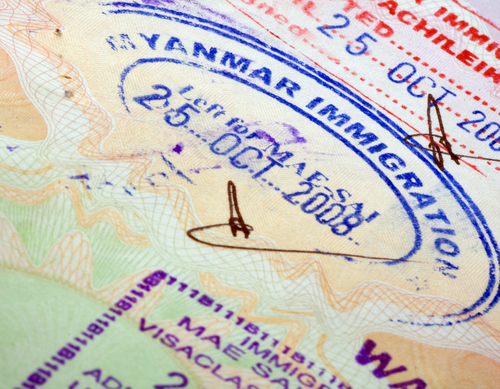
Depending on your country of origin, you may need to apply for a visa before entering Myanmar. But the good news for Singaporeans is that you don’t need to apply for one to visit the country!
Singapore citizens may visit the country for up to 30 days without the need to apply for a visa. And they may both enter and leave Myanmar from all international checkpoints.
On the flip side, most other foreign nationals will need a visa to enter Myanmar. A list of countries which would require visa approval before visiting is available on the Myanmar Immigration website, found here. If you’re a passport holder of one of the countries listed, you may apply for eVisa here.
2. Keep These Social Etiquette In Mind

One of the worst things you can do to offend the locals is to point your feet at them. The reason being, the locals are considered it to be the dirtiest part of the body. Pointing your feet towards any of the locals can be easily construed as a blatant disrespect towards them — at the minimum. And an especially egregious act of disrespect in Myanmar is sitting with your legs stretch out, both feet facing the figures of the Buddha, so we’d suggest you not to do it. The proper way is to sit criss-cross or with your feet beside or behind you to show respect.
In the same light, do also keep your feet off the furniture. We know that sitting back and kicking your feet up is relaxing, but leave all that for when you get home, alright?
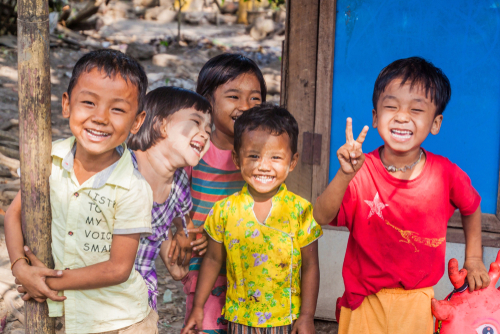
On a related note, one’s head is also considered the most sacred part of a person’s body. And because of this, it is considered very rude to touch anyone’s head, even if it’s done in a friendly manner. A case could be made for children’s heads, but to be safe we’d recommend avoiding touching anyone’s head — regardless of their age.
3. Observe These Outfit Requirements When Visiting Religious Sites
Myanmar is a country filled with beautiful ancient Buddhist temples and soaring pagodas, but not dissimilar with any other religious locale, a certain level of decorum is expected from visitors. In particular, dressing conservatively is key here.
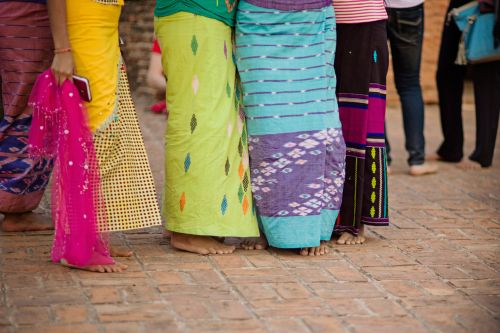
First, you’ll need to remove your footwear (including socks) before entering any religious site in Myanmar. We’d suggest packing your flip-flops for the days you’re visiting Myanmar’s temples and pagodas. And while some sites may have storage for your footwear, bringing a plastic bag along to store your shoes /slippers and carrying them with you may be the wiser choice.
The Myanmarese are a very religious lot and they take their Buddhist tradition seriously. Disregarding these rules is considered to be impolite. If you’re unsure about whether you are required to take off your footwear due to a lack of obvious signage, we’d say it’s definitely better to be safe than sorry, and to simply remove your shoes before you step into any pagodas.
In a similar vein, you should always dress conservatively when visiting pagodas. Men, this applies to you as well. You aren’t allowed in any pagodas wearing shorts, but if you do show up sporting jorts or something of similar ilk, you’ll be asked to buy a longyi (a light traditional garment worn by the locals) before you may enter.
For women, covering your knees and shoulders should suffice before visiting any religious places. Or you could also buy a longyi to stay airy and cool amidst Myanmar’s blazing heat.
4. Never Climb On Pagodas Or Enter Any Prohibited Areas

While the tourism industry in Myanmar is still in a nascent state, there are plenty to see and do. The land of Myanmar is dotted with ancient stupas and cultural wonders from 6th century. Temples and pagodas make up the landscape of Myanmar. It is important to note that not all are open to the tourists. ot all With some regions in the far north being restricted to tourism, a government permit and a local guide may be required to enter.
We don’t have to tell you what will happen if you disregard the warnings and enter these zones illegally. So make sure to do your research on where you may freely visit in the country before you arrive.
Speaking of illegal, it is also against the law to party, sleep, drink or basically cause a ruckus at any of the pagodas, temples, and other religious sites in Myanmar. Visitors should also be aware of which areas (usually clearly indicated by signs) of the pagodas and temples they aren’t permitted to enter or climb. And while climbing and trespassing into these restricted areas to capture that picture-perfect IG pic may seem worthwhile to you, it really isn’t worth the hassle of being arrested.
Additionally, remember that these grounds are important religious sites to the locals. Rowdy and obnoxious behaviour here is completely inappropriate and frowned upon by the Burmese. To illustrate our point, how would you feel if some foreigner came into your safe haven and caused a mess? Unpleasant, we’d surmise.
5. Avoid Using Your Left Hand
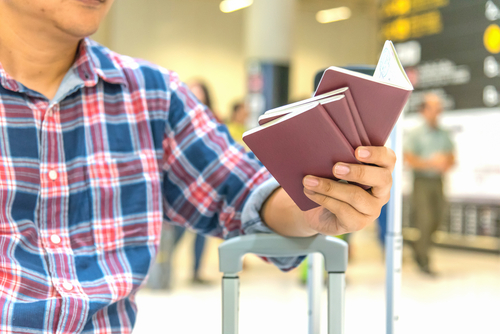
This is more of a local social custom. Visitors who use their left hand to offer or accept things from people are considered rude as the locals typically associate the left hand with potty habits. Similarly, also avoid using your left hand to pass around food for the same reason.
Instead, be sure to only use your right hand or better yet, both hands when you give or accept things from anyone.
6. The Free WiFi Spots In Myanmar Are Painfully Slow, Get Mobile Data Instead

Myanmar isn’t exactly a high tech country by any means, but they aren’t too far behind the curve either. They do have the technology and network infrastructure in place albeit lacking the bandwidth needed to facilitate smooth Internet speeds.
Yes, millennial travellers and social media addicts are going to bemoan the painfully slow Internet in Myanmar. But there’s a reason for this extremely laggy Internet. The country only adopted the Internet about two decades ago, so you can imagine how underdeveloped Myanmar’s Internet network is.
These days, you may yet find some good WiFi spots in the city — mostly in pricey hotels and high-end cafés. But then again, the Internet in Myanmar is always unstable and not guaranteed to be fast, so do not trust any “We Have WiFi” signs until you can actually test the connection.
Rather, we’d suggest that you purchase an inexpensive local SIM card with data which will work better than most WiFi zones in the country. Otherwise, a portable WiFi router might be better suited to your needs as well.
7. Keep Your Foreign Currencies Tidy and Clean

In the past, exchanging currencies entailed heading to the black market to get your hands on the local Kyats. This was because banks and ATMs were nearly non-existent back then — which isn’t the case today.
But due to this particularly seedy history, many of the locals are still distrustful and very particular about the quality of the (U.S.) dollars that they receive. In this case, it’s best to bring notes that are clean, crisp, and undamaged when you want to exchange currency in the country. Do be warned, you may be turned away (especially at international airports) if any of your U.S. dollars aren’t up to par with Myanmar’s high standards.
However, do not get rid of these crumbled and old bills just yet. Many accommodations will accept these dollars without much problem. And plenty of local businesses are accepting the U.S. dollar especially from tourists as an alternative to the local currency.
8. Book Your Accommodation In Advance

As the tourism industry in Myanmar flourishes, the demand for various accommodation options has also spiked accordingly. Unfortunately, the country is currently barely able to keep up with this demand. Lo and behold, the prices of hostels, hotels, and guesthouses are now steadily increasing year by year.
Of course, there are more budget-friendly options springing up recently compared to a couple of years ago. But it remains to be seen how Myanmar’s short supply of accommodations and increasingly expensive hotels will severely impact its tourism industry. For this reason, we’d definitely suggest booking a hotel room in advance (especially during peak seasons) to secure your accommodation.
Also, if you’re coming from a country requiring a visa, another reason to book in advance is that the visa application process requires visitors to fill out a hotel or hostel address when they apply.
9. Avoid Street Food That Are Not Cooked/Handled Properly
Street food is king in Southeast Asia, ‘nuff said.
Oftentimes, we’ll cite street food as the perfect gateway to introduce oneself to the local culture of most SEA countries. After all, it’s affordable, the locals have it daily, and you can find it everywhere. It’s mostly always tasty!
However, when it comes to Myanmar’s street food and hygiene there’s a lot left to be desired. Visitors shouldn’t just devour any and all dishes they find on the streets of Myanmar. Plenty of visitors have paid the price by getting struck by a bout of food poisoning, so be sure to be extra careful the next time you get tempted by the waft of one of Myanmar’s many iconic dishes.
Make sure to examine all street food stalls before you take your first bite. If a place doesn’t particularly instil confidence, it’d be better to move on. Chances are, you’ll find another stall selling the exact same food in a cleaner environment.
10. Don’t Drink The Tap Water
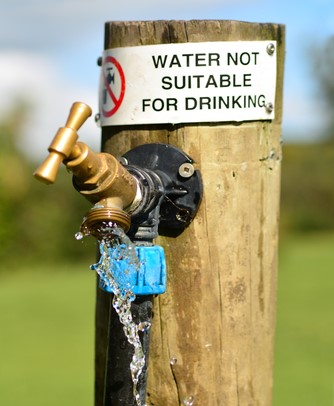
You should avoid drinking water straight from the tap in Myanmar as it’s unsafe. Those that are environmentally inclined may still be tempted to do so, but you’ll only end up potentially rifled with waterborne viruses as a result. Subsequently, a classic case of being down with an upset stomach is what awaits you, along with loads of time shaved off your vacation to recuperate.
Instead, just stick to the safer option. A bottle of water doesn’t cost much — just be sure to dispose of the plastic waste responsibly afterwards. Alternatively, most hotels and hostels around the country will have free purified water on offer. So you could fill up your bottles before you head out for the day.
All images from Shutterstock.




